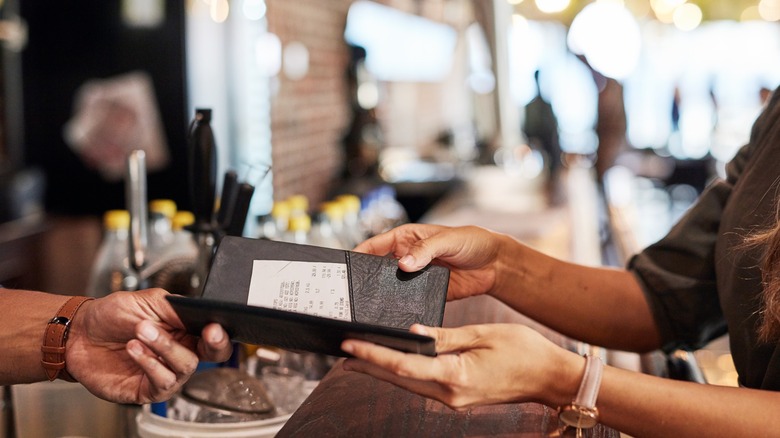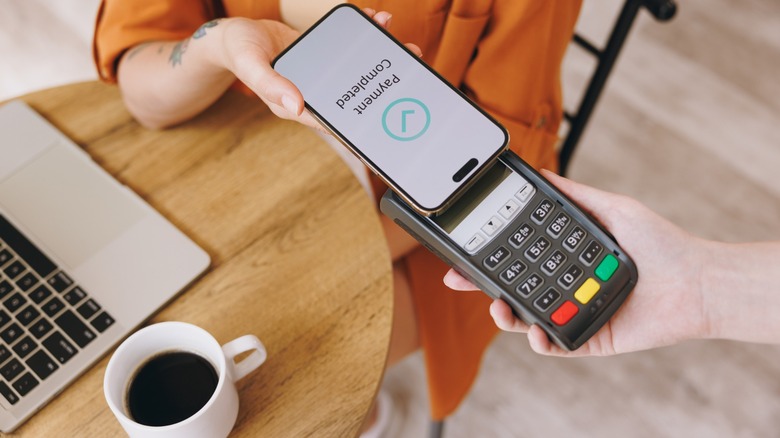The State That Tips The Best In America
From The Old Place in California to The Ohio Club in Arkansas, and every burger joint, Mom n' Pop diner, or Michelin-starred restaurant in between, when you go out to eat in the United States, the expectation is that you'll tip the person who serves you your food. Like it or not, gratuity is more than a social nicety; it's an expected component of servers' wages that is offloaded by restaurant owners onto customers. How much you choose to tip can, for some people, be a matter of great indecision and is often impacted by the quality of the service offered. What, exactly, is a "normal" tip, anyway?
According to payment technology company Toast and its Q1 2025 report on American restaurant spending, the average tip for sit-down service at a U.S. restaurant is right around 20%, with patrons tipping more for exceptional service and less for a poor experience. You may be surprised to discover, however, that tipping norms vary by location, with some states averaging higher and lower tips. Specifically, Delaware residents tend to be generous tippers, with a tipping average of 22.1%. On the other hand, Californians tend to tip the lowest, at 17.3%.
It's interesting to note, however, that a Golden State server is likely still making more than a member of a Delaware restaurant's waitstaff. That's because California's servers get a minimum wage of $16 per hour as of this writing, while Delaware servers are subject to a separate tipped minimum wage of just $2.23 per hour.
The evolution of a good tip
As recently as the 1950s, common etiquette dictated that 10% was an acceptable tip for good service. By the 1980s, that figure had risen to 15%. Experts say that the COVID-19 pandemic permanently changed the way that Americans tip. Driven by sympathy for hospitality workers arguably risking their health to serve food, people started tipping more and at places that they never would have previously considered tipping, like coffee shops and drive-thrus. Now, it's common even at counter service locations to have a screen tilted at you and a request for a tip. It's a trend that has some consumers fatigued with the whole ordeal.
According to a 2023 Bankrate survey, a full 66% of Americans hold negative views about tipping, with an increasing number of patrons declining to tip at all. It may be the case that the average tip is increasing, but it may also be true that fewer people are tipping at all. That could be thanks to omnipresent tip requests and a desire to do away with the current tipping system, even if it means paying higher menu prices to compensate. Younger consumers are less likely to tip than their older counterparts, with a steady decline evident from Baby Boomers down to Gen Z, meaning that there may be a generational aspect to tip behavior as well. Is tipping a dying practice? Only time will tell.

